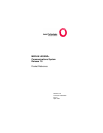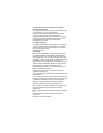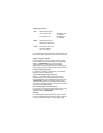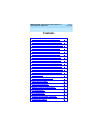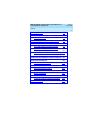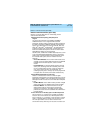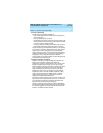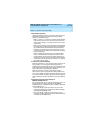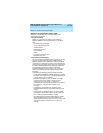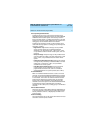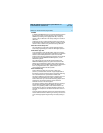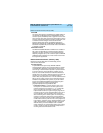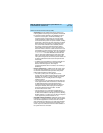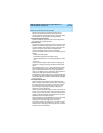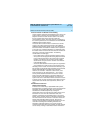
MERLIN LEGEND Communications System Release 7.0
Pocket Reference
555-670-116
Issue 1
April 1999
2
Release 7.0 Enhancements (April 1999)
■ Priority Call Queuing
Priority call queuing provides the ability to:
— Place some callers ahead of others who are waiting for the
same agent group.
— Give key clients priority over others.
— Automatically increase the number of agents answering calls
during busy times, while continuing to offer callers the choice
to leave a message instead of waiting.
— Keep costs down by handling toll free calls (calls arriving on
800 and 888 lines) before processing calls on local lines.
Priority call queuing is accomplished in Release 7.0 by allowing
you to define a supportive relationship between calling groups.
Calls that arrive in one calling group can be processed by
another calling group when no one from the first calling group is
available to answer the call. Through system programming, a
calling group can be assigned a priority level between 1
(highest priority) and 32 (lowest priority) and then designated as
a support group for another group.
■ Calling Party Name on Caller ID
Release 7.0 continues to support Calling Party Number and
adds a new functionality for Calling Party Name. By
programming a button on the telephone or with a feature code
through centralized programming, users are able to toggle
between displaying the caller’s telephone number or the caller’s
name. In order to use this feature, users must subscribe to
caller identification from their local exchange carrier (LEC).
Calling Party Name can be 15 characters in length for MLX
telephones as well as for ETR and MLS telephones. Calling
Party Name is not recorded on SMDR reports. In addition,
neither Calling Party Name nor Calling Party Number are
displayed on analog multiline telephones.
This feature requires loop-start (LS) trunks. The existing LS-ID
delay feature must be programmed for each line, as well. This
prevents Calling Party Number and Name information from
being lost when a call is answered too quickly.
Release 7.0 software also supports the Caller ID capability of
the 408 GS/LS-ID-MLX module. Although previously orderable,
the Caller ID capability of this module could not be used until
Release 7.0 software became available.



